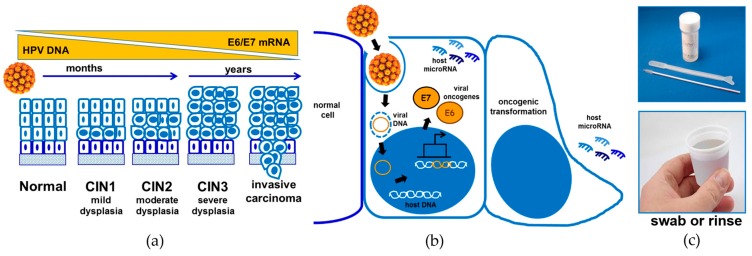Figure 1.
(a) Timeline of cervical cancer progression. Human papillomavirus (HPV) infects the basal cells of the cervical epithelium (dark blue) exposed by wounding, leading to cytological abnormalities; (b) Expression of viral oncogenes E6/E7 accompanies malignant transformation; (b) HPV infection pathway. Following viral entry, viral replication is synchronous with host cellular DNA replication. Integrated and episomal viral DNA produce E6 and E7 oncoproteins. E6 targets p53 for degradation and prevents apoptosis while E7 inactivates retinoblastoma (Rb) tumor suppressors, promoting cell cycle progression. The end result of these processes is cellular transformation. HPV infection also alters transcription of host microRNAs; (c) Samples for detection of HPV E6/E7 mRNA or host microRNA. CIN: cervical intraepithelial neoplasia.

